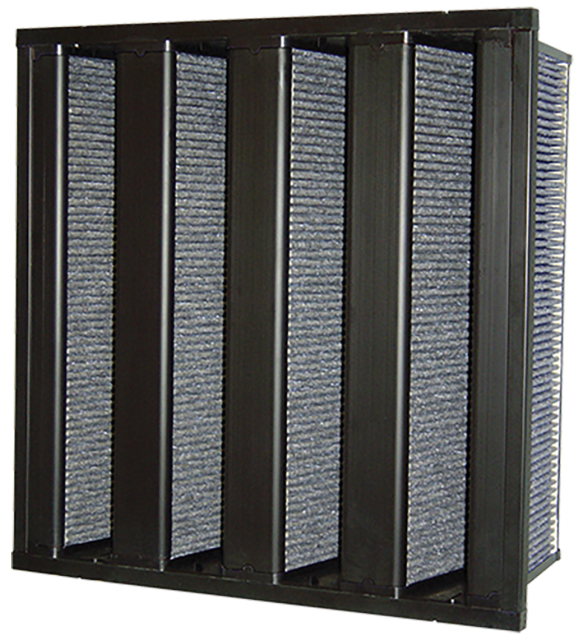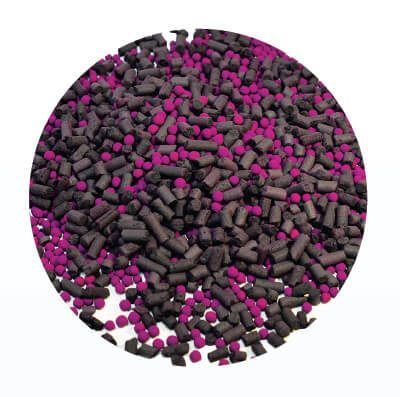Gas-phase filters
Gas-phase filters are specialized filters used to remove gaseous pollutants from the air. Unlike particulate filters, which capture solid and liquid particles, gas-phase filters target contaminants that exist in the gas phase, such as volatile organic compounds (VOCs), odors, and harmful chemicals. These filters are essential in industries like cleanrooms, laboratories, semiconductor manufacturing, and other environments requiring high air quality standards.
How Gas-Phase Filters Work:
1. Adsorption Process: Most gas-phase filters use activated carbon or other porous materials. The gases adhere to the surface of these materials in a process called adsorption. The activated carbon has a large surface area, making it highly effective for trapping a wide variety of gaseous contaminants.
2. Chemisorption: Some filters use materials that not only adsorb gases but also chemically react with them, neutralizing harmful gases through chemical reactions.
3. Catalytic Converters: In certain applications, catalytic materials are used to convert toxic gases into less harmful substances. For example, ozone can be converted to oxygen, or nitrogen dioxide to nitrogen and oxygen.
Applications
Pharmaceutical and Biotechnology: Gas-phase filtration is crucial for maintaining clean air to avoid contamination of sensitive products like vaccines, drugs, and other biopharmaceuticals.
Semiconductor Manufacturing: These environments are highly sensitive to airborne molecular contamination (AMC), which can damage semiconductor materials during production. Gas-phase filters ensure that harmful gases like ammonia, chlorine, or sulfur compounds do not interfere with the delicate manufacturing process.
Hospitals and Labs: Medical and research facilities use gas-phase filters to control odors and hazardous gases, maintaining a sterile and safe environment.
Types of Gas-Phase Filters:
1. Activated Carbon Filters: Widely used due to their high surface area and ability to adsorb a wide range of gases. They are especially effective in removing odors and VOCs.
2. Potassium Permanganate Filters: These filters chemically react with gases like hydrogen sulfide, sulfur dioxide, and nitrogen oxides, converting them into harmless compounds.
3. Photocatalytic Oxidation (PCO) Filters: These use a UV light source and a catalyst (often titanium dioxide) to break down pollutants at a molecular level.
4. Hybrid Filters: Some systems combine particulate filtration with gas-phase filters, offering a comprehensive solution for environments requiring both clean air and gas-phase contaminant removal.
Benefits in Cleanroom Applications:
Enhanced Product Quality: By eliminating gaseous contaminants, gas-phase filters reduce the risk of product defects, particularly in highly sensitive industries like semiconductor and pharmaceutical manufacturing.
Safety and Compliance: Many industries are required to meet strict air quality standards, and gas-phase filtration helps maintain compliance with these standards, ensuring the safety of both products and personnel.
Gas-phase filters are an integral part of maintaining air purity in high-tech industries and environments requiring strict contamination control. By integrating these filters, cleanroom facilities can ensure a safe, compliant, and efficient production process.




